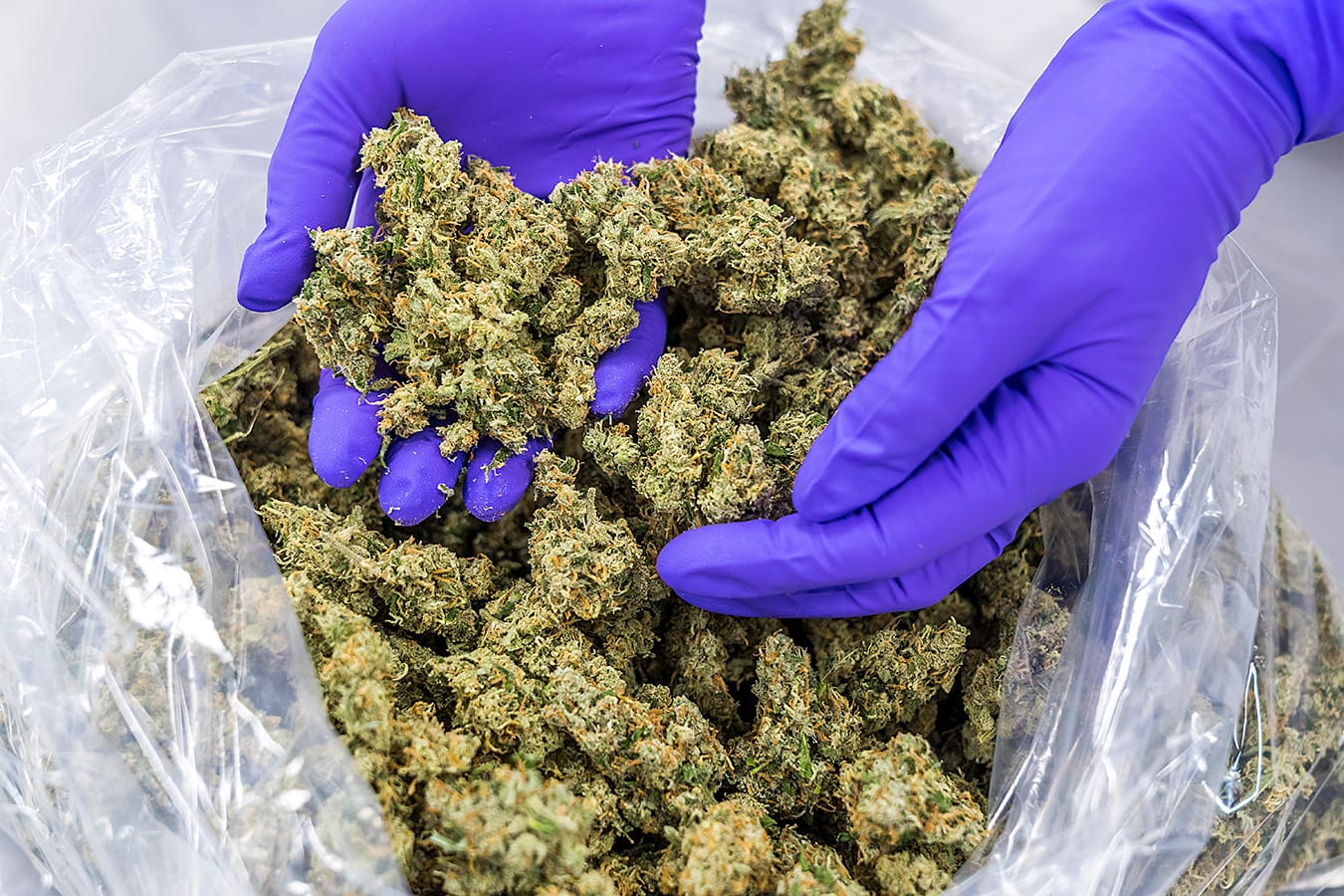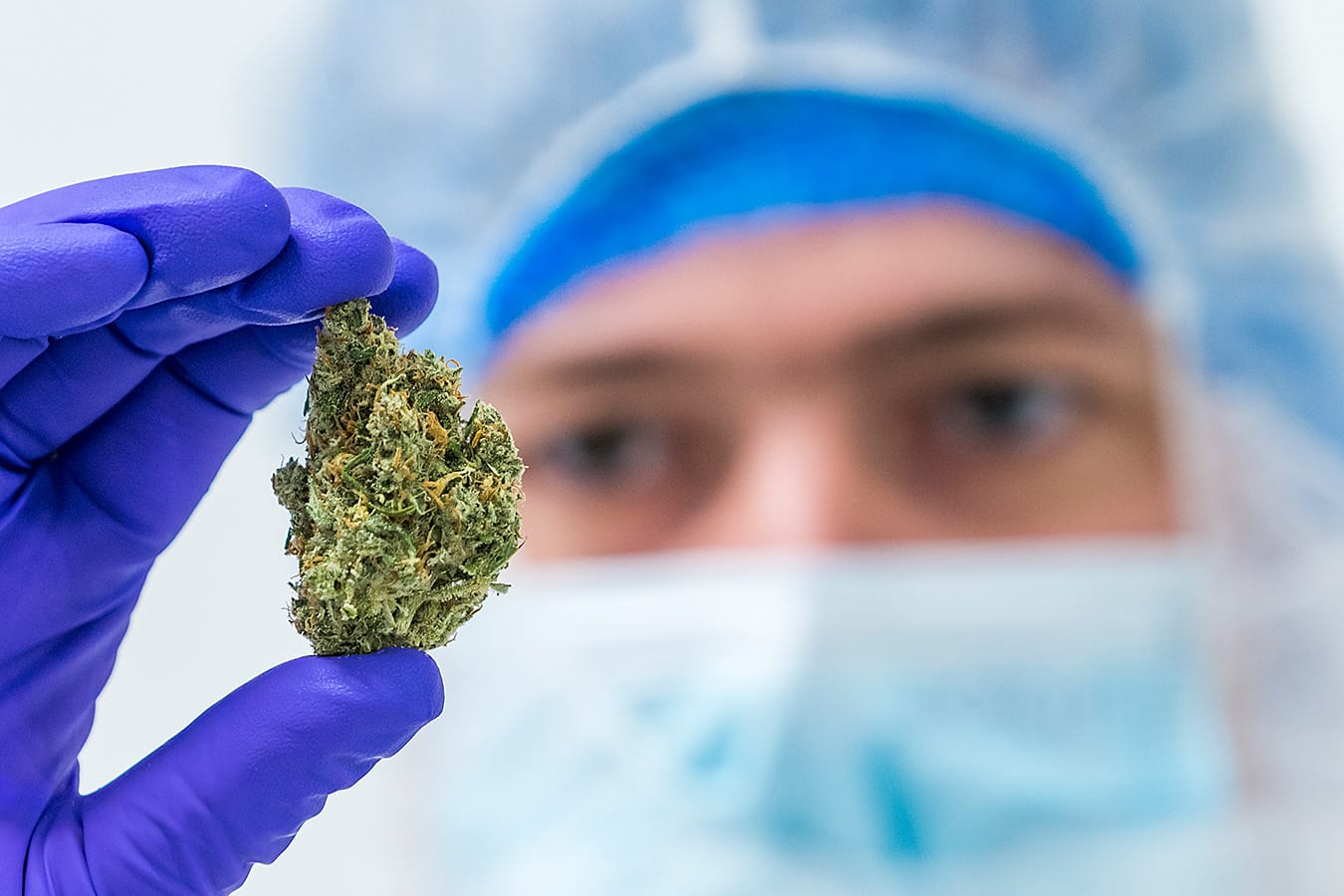How is Bedrocan’s cannabis irradiated?
All Bedrocan’s cannabis products manufactured in the Netherlands are gamma-irradiated by an external company. This has been contracted by the Dutch government. We have written before about how gamma radiation does not change the medicinal cannabis’ composition and how irradiation is necessary to ensure a sterile product for patient use. However, this is the first time we offer an insight into how the irradiation process works.
Gamma radiation, so-called ionising radiation, is the same type of radiation used in X-rays. Gamma rays are deadly to microorganisms, including fungi, viruses and bacteria. Gamma radiation, generated by Cobalt-60 isotopes, is also very harmful to humans. That is why an irradiation company must have a special room, a type of bunker with walls of 2.5 to 3 meters thick concrete, where the products are irradiated. Employees and visitors are not allowed to enter it.

In the Netherlands, mainly medical and hospital equipment is irradiated with gamma rays, such as heart valves, baby bottles, knee prostheses, and contraceptive implants. For twenty years now, medicinal cannabis, which Bedrocan produces in the Netherlands on behalf of the Office of Medicinal Cannabis (OMC), is also irradiated. Sterilisation, as the process is euphemistically called, is done 24 hours a day, seven days a week, and is fully automated. All kinds of medical products go into the bunker inside a box through a conveyor belt. Cannabis is treated in the bunker for about 1 to 1.5 hours.
In addition to medical equipment and medicinal cannabis, food is also irradiated in some countries. This is done to reduce microorganisms in food and extend shelf life. The EU tracks which foodstuffs are irradiated annually in the European Union. According to the latest figures from 2019, the three most commonly irradiated products are frog legs (65.1%), poultry (20.6%) and dried aromatic herbs, spices and vegetable seasoning (14.0%). In the EU, the irradiation of foodstuffs is limited and must certainly not replace hygienic conditions. Irradiated food or ingredients must be labelled as such.
However, in America and Asia, food irradiation is more common. This mainly concerns meat and fruit. According to the US Food and Drug Administration (FDA), irradiation does not affect nutritional quality or change the taste, texture or appearance of food.
Nuclear cannabis
Still, patients are concerned. This is mainly due to the lack of clarity on how cannabis is irradiated. While most European countries have clear regulations, American cannabis growers, for example, have unclear rules. Cannabis that has failed a contamination test can be subsequently irradiated so it can still be sold, according to an article by MJBiz Daily. “Generally because of bad microbial growth due to poor sanitation in the grow and processing stages – growers will have to nuke it.”

“Nuke” suggests that irradiation is associated with nuclear contamination or radioactive danger. But is that so? Is nuclear energy released? The answer is clear: Gamma irradiation has nothing to do with radioactive contamination. Some people have negative associations with the word ‘radiation’, but the gamma irradiation process is entirely safe. The process kills microorganisms and cleans the products. Products sterilised in this way are entirely free of radiation after treatment. In fact, these products are safer after the irradiation process and also have a longer shelf life.
Why to irradiate?
As a natural product, cannabis cannot be 100% free of microorganisms, even when grown in a strict-controlled environment. Non-irradiated cannabis may contain traces of microbes or fungal spores. These can be harmful to health. For example, some Aspergillus fungi, present all around us, can cause severe illnesses. Patients with reduced resistance are particularly more vulnerable. Therefore, governments that make medicinal cannabis available require some form of sterilisation.
The blue glow of cobalt
Cobalt is a crucial part of batteries in, for example, a smartphone. This mineral is mainly mined in African cobalt mines. In only a limited number of locations in the world, cobalt is converted into Cobalt-60, the isotope that generates the final gamma rays. The largest reactor is in Canada. Cobalt-60 is supplied in granular form in long metal rods. An irradiation company has hundreds of such rods in use. When the irradiation installation is out of operation, these rods are submerged in water, giving off the well-known cobalt blue colour. Water, like the thick walls, blocks the radiation. The bunker is built like a labyrinth so the radiation cannot leak.
Subscribe to our newsletter
Stay informed with our latest updates by subscribing to our newsletter for exclusive news and compelling content. Rest assured, we prioritize the integrity of your inbox, delivering quality over quantity, with newsletters dispatched judiciously.






